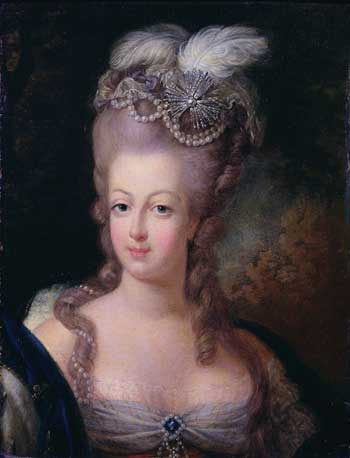
The whole area of the Champs Élysées was originally fields until, in 1616, Marie de Medici (that name should be familiar by now) decided to add to her beloved Tuileries gardens a tree lined path.
For another hundred years everything stayed pretty much as tranquil as it had ever been in that part of Paris but in 1724 the Tuileries garden were connected with the path which became avenue. This marked a big change for the former fields and by the late 18th century, the Champs Élysées were definitely fields no more, but instead a fashionable avenue.
The gardens of the extravagant mansions backed onto the Champs Élysées, giving a majestic, grand air to the avenue.
The grandest of all was the Élysée Palace which was owned by Bathilde, the Duchess of Bourbon. Queen Marie Antoinette could sometimes been seen driving down the avenue to take music lessons at the grand Hôtel de Crillon. As the French Empire expanded so did the Champs Élysées until it finally became property of the city in 1828.
In 1852 Napoleon III commissioned Georges-Eugène Haussmann the modernization of the French capital and Haussmann became Paris' civic planner.
Since the Revolution of 1789 the Parisians ideals had changed. When it had been a city where deep political changes had occurred it had mutated into a city powered by the bourgeoisie's economical and social changes and quite simply, the street plan wasn't up to scratch. Napoleon III wanted Paris to become a different city to the Medieval one; he wanted the streets to be safer, houses to be more modern and to improve it's precarious sanitary system. The traffic-flow had to be improved as well. Most importantly, he wanted wide avenues that would be too difficult for rebels to barricade.
At all costs, Napoleon III wanted to leave no chance for another revolution to take place.
And Haussmann did exactly what was asked of him. He tore up much of old, medieval Paris with its rundown apartment buildings and replaced them with wide, sweeping boulevards and the expansive gardens that Paris is now so famous for.

Haussmann's improved designs of streets and avenues gave new importance to transport and trains, firmly bringing Paris into the modern era. Another of Napoleon III's wishes was that army battalions and artillery could move easily around the city if needs be, and Haussmann's boulevards more than fulfilled this requirement.
For some, Haussmann was a savior, rescuing Paris from the dirty, crowded streets of the last century that were littered with makeshift shanties and every sign of poverty. Haussmannization not only made the streets wider and cleaner but exiled the most impoverished of Parisians to the suburbs since the slums were torn down and replaced with bourgeois apartments.
However the grand plans for a new Paris didn't please everyone.
The French capital's remodeling plan carried out by Haussmann took place in1860s - a time of exceptional political turmoil in the history of Paris. Some people were troubled by the destruction of Paris's roots and blamed the physical destruction of the city for the apparent social destruction that Parisians were experiencing.
Whether Haussmann could be blamed for the social unrest at the time of the re-design is dubious, but one thing he could, and was, blamed for is the immense cost of the project.
A loan of 250 million francs was approved in 1865 shortly followed 4 years later by another loan of 260 million. That was only a partial amount of what Haussmann spent.
The controversy over the cost of the re-design got so big that in January 1870 Napoleon III got rid of Haussmann in an attempt to boost his own waning popularity.
Needless to say it didn't work. Napoleon III died in exile in England a few years later in 1873.